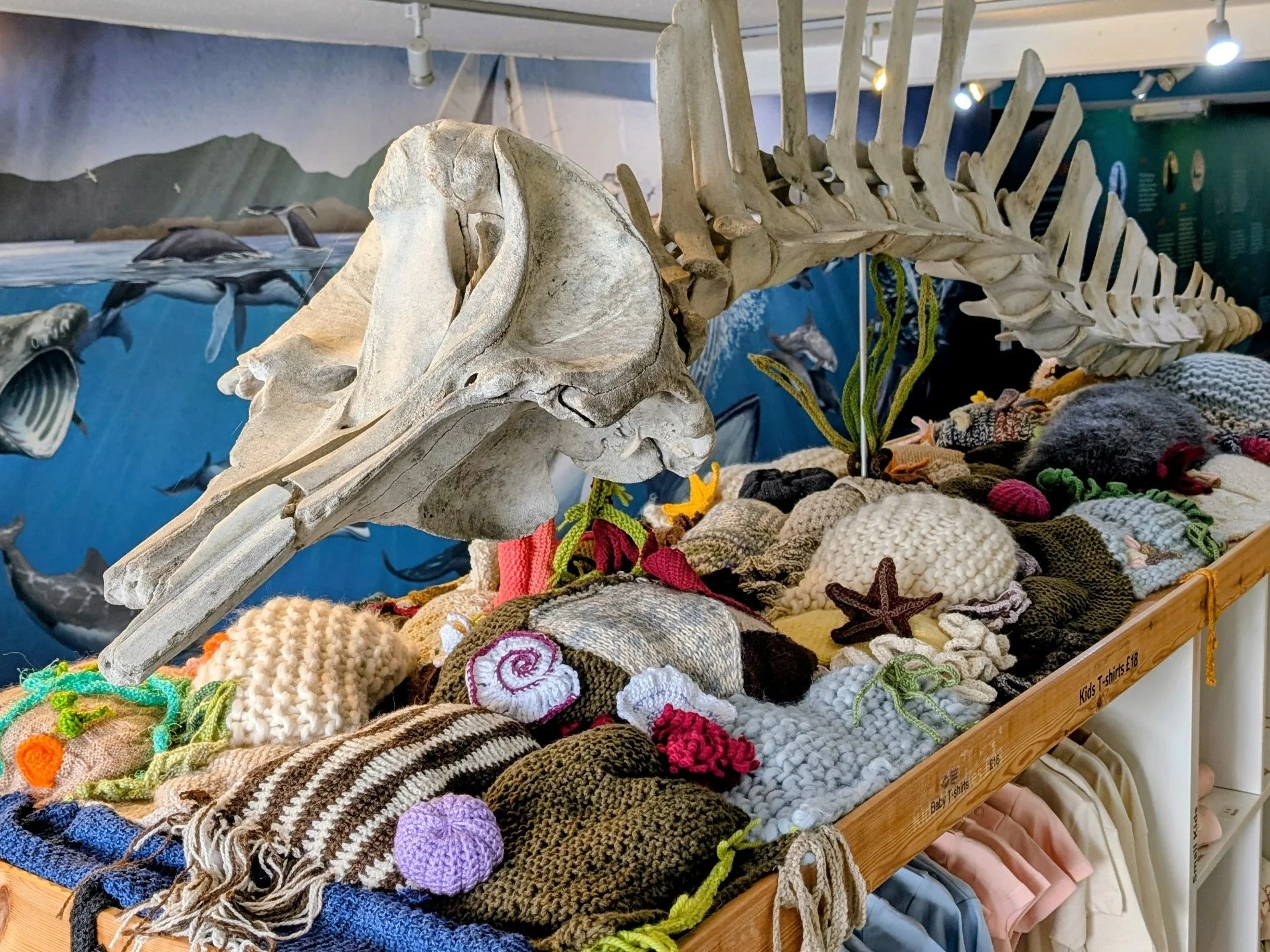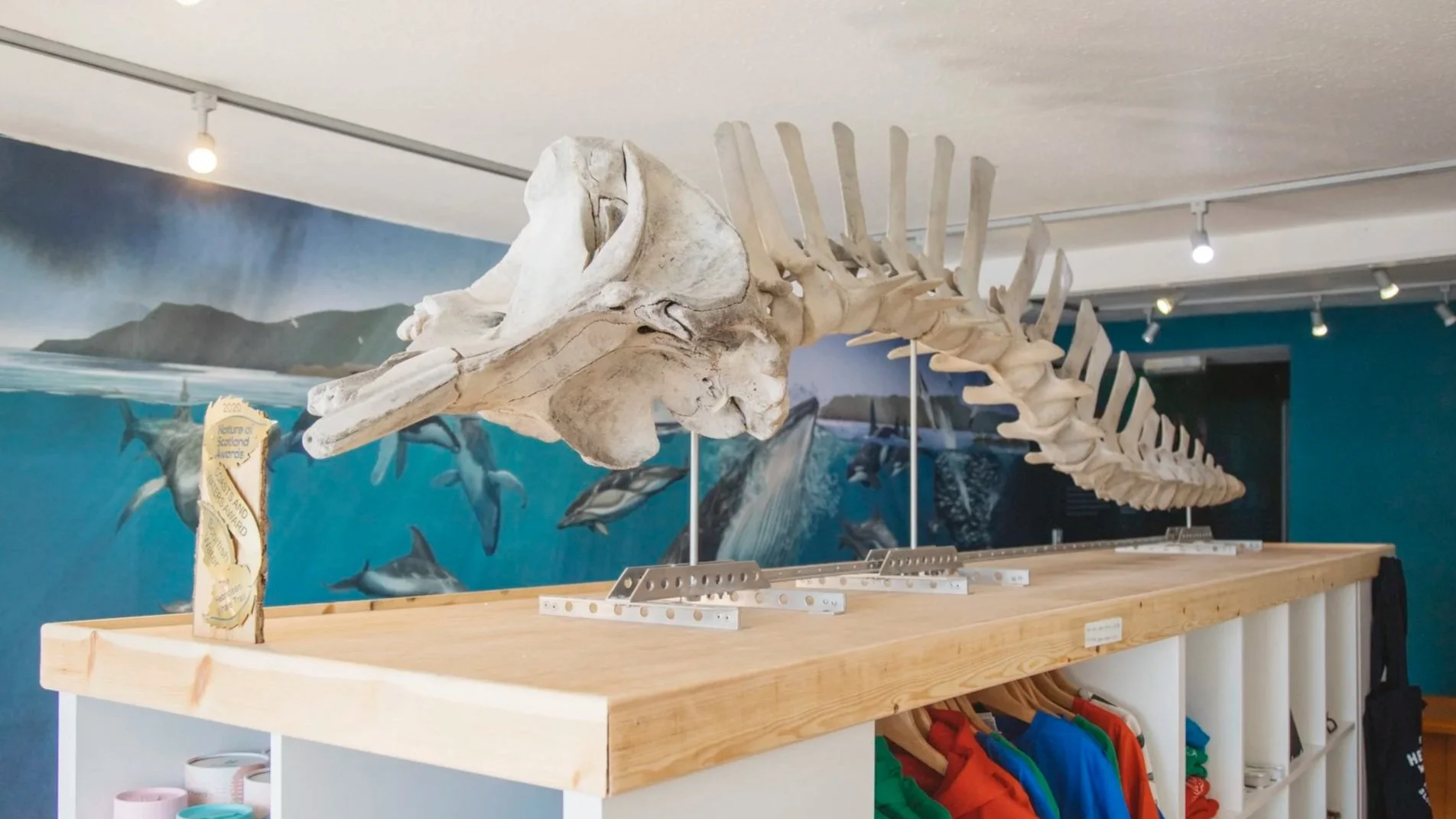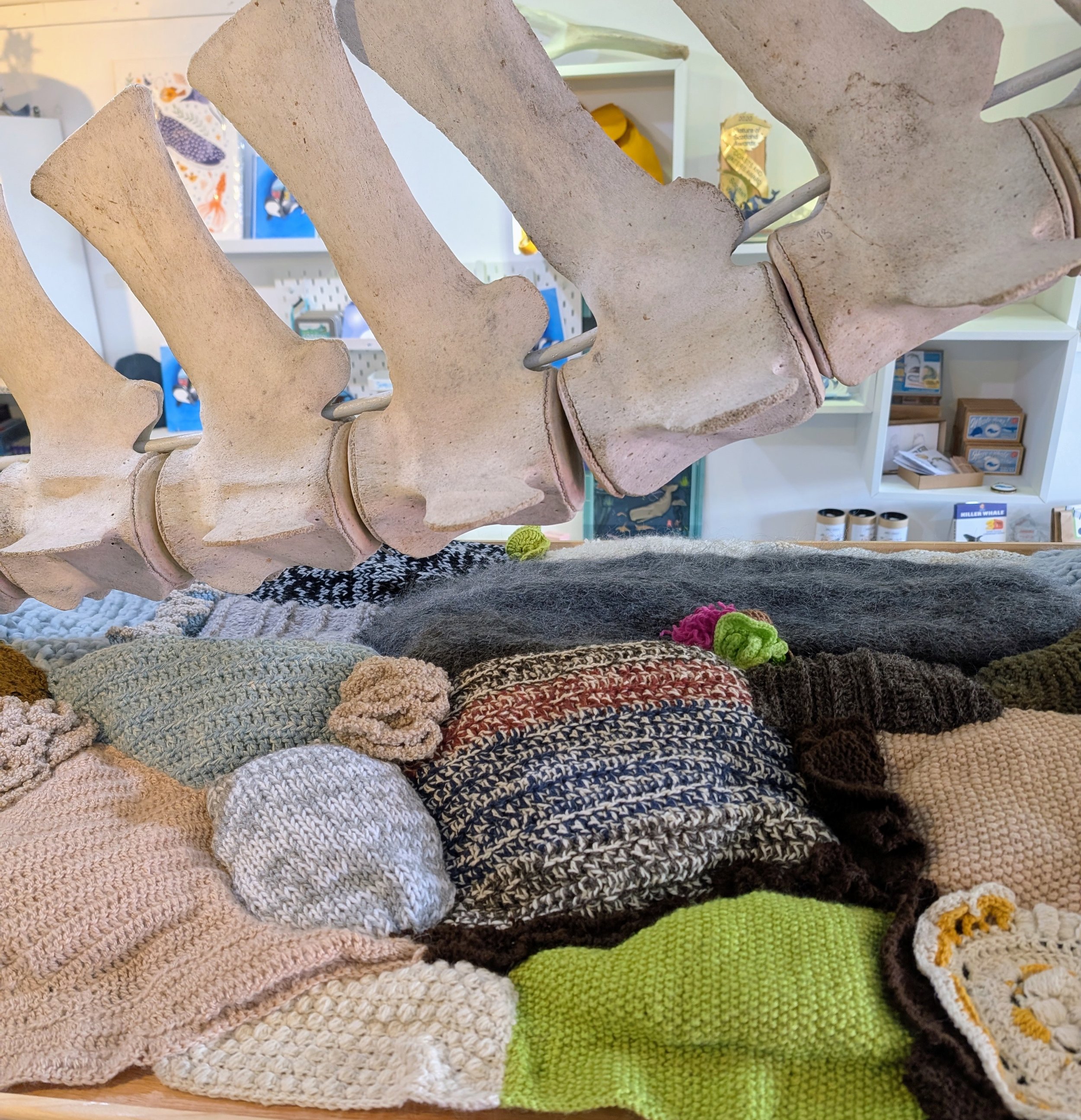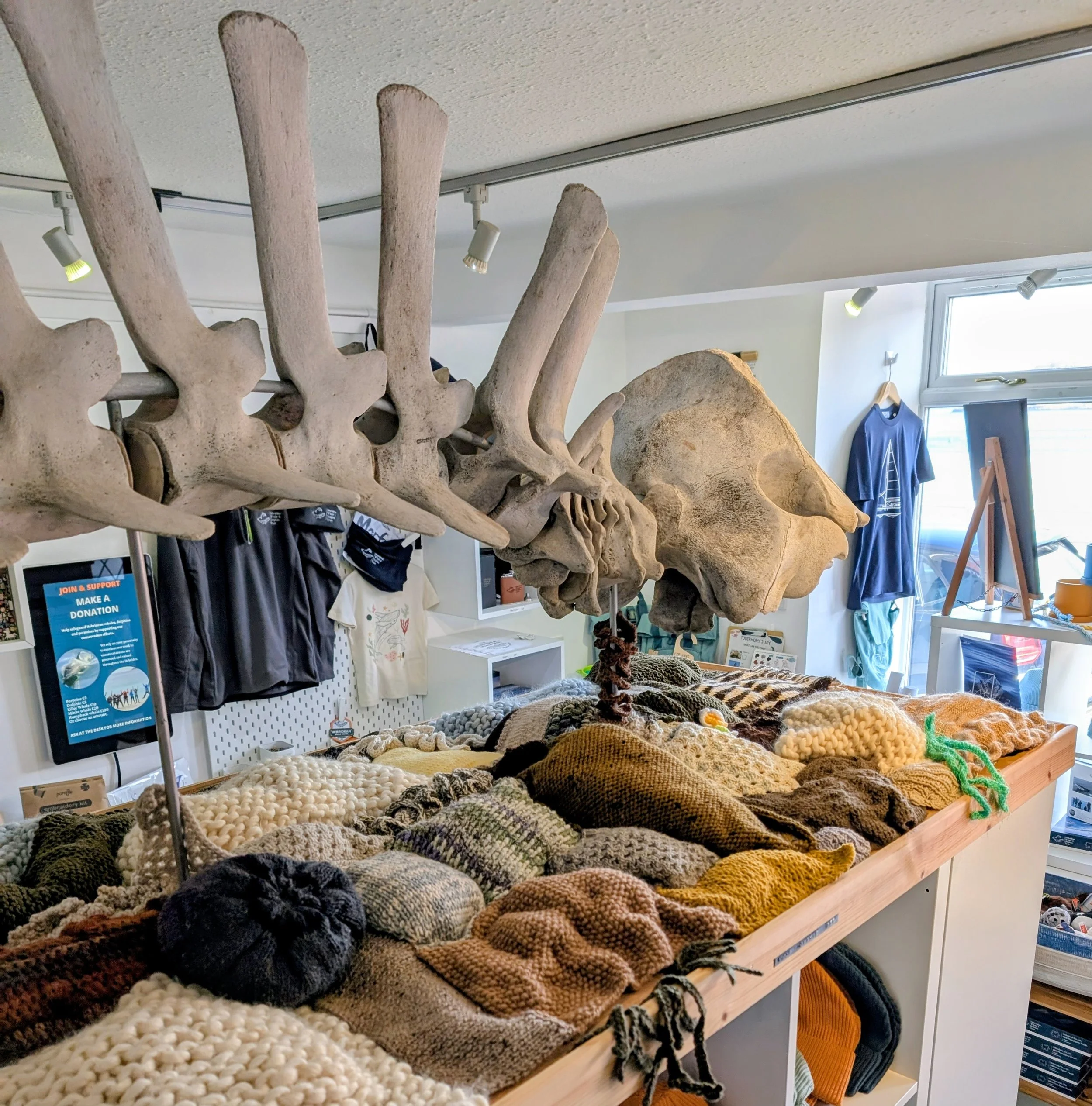A yarn-crafted seabed bringing a whale’s story to life
The completed exhibit
During the first half of 2025 a clicking sound could be heard all along the east coast of Mull.
No, this wasn’t the sound of cetaceans heard through the hydrophone but the gentle clacking of knitting needles and crochet hooks as nine volunteers quietly united in the purpose of bringing one of our Hebridean Whale Centre skeletons to life.
For many years, the skeleton of a juvenile female Cuvier’s beaked whale has been displayed in our centre - an individual discovered nearly two decades ago with 3kg of plastic in her stomach. Known for making the deepest (9,816 foot) and longest (222 minutes) dives of any mammal, this remarkable species forages in the midnight zone of the ocean depths. The fact that litter reaches these depths is a sobering reminder of the impact we have on our oceans, and the skeleton has long served as a starting point for important conversations around marine conservation and human impact.
The Cuvier’s beaked whale skeleton in situ
As part of our recent refurbishment, the skeleton was moved to a central plinth at the heart of the entrance space. But with the support frame exposed, the display felt incomplete. That’s where our crafting community stepped in.
Local fibre-based artist, Carolyn Whenman, who is based in Gruline on the Isle of Mull, creates large wall hangings made from multiple pieces of knitting joined together in unique ways to create colourful and impactful artwork. She volunteered her time and expertise in getting this project started and advised collecting together flat pieces of knitting or crochet in natural seabed colours.
Local community crafting groups in Craignure and Tobermory were approached to see if they would be interested in volunteering their time to create the flat pieces of knitting/crochet. Both groups were keen to be involved, and through word of mouth, these were joined by additional individual volunteers from Garmony, Salen and Dervaig.
Over the course of a few months they created flat pieces of knitting and crochet from recycled yarn in natural colours to illustrate the sandy rocky ocean floor. These were then attached to a piece of backing fabric and placed under the skeleton. Phase one was completed in Spring 2025.
Then came phase two: bringing the seabed to life. Volunteers began creating an array of woollen sea creatures and embellishments; anemones, shells, strands of seaweed and other hidden treasures of the deep. Throughout the summer these creations drifted into the centre, one by one, and were carefully stitched them into place. A few pieces were intentionally left loose, giving visitors the delight of gently rearranging the landscape themselves.
The result is a beautifully tactile, ever-evolving artwork that has captured the imagination of everyone who sees it. Visitors regularly stop to admire the detail and craftsmanship, and the installation has already sparked countless conversations about our seas and the species we work so hard to protect.
A heartfelt thank you to all the volunteers who contributed their creativity, time and skill. You have transformed a static skeleton into a vibrant, engaging exhibit that tells a deeper story, one stitched lovingly by our talented crafting community.
If you’re on Mull, pop into the Hebridean Whale Centre to see this incredible piece up close - photos don’t do it justice!















